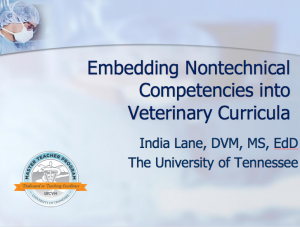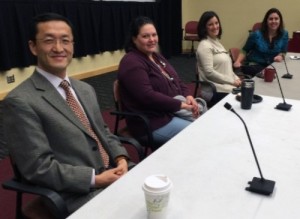 On Friday, Jan. 29, Dr. India Lane, Professor of Medicine in the Department of Small Animal Clinical Sciences and Associate Vice President for Academic Affairs and Student Success at the University of Tennessee, visited with faculty to discuss methods of teaching non-technical skills across a veterinary education curriculum.
On Friday, Jan. 29, Dr. India Lane, Professor of Medicine in the Department of Small Animal Clinical Sciences and Associate Vice President for Academic Affairs and Student Success at the University of Tennessee, visited with faculty to discuss methods of teaching non-technical skills across a veterinary education curriculum.
According to Dr. Lane, the following non-technical competencies have been identified as critical to successful veterinarians. Continue reading Visiting Expert Presents Innovative Approaches to Teaching Non-Technical Skills


